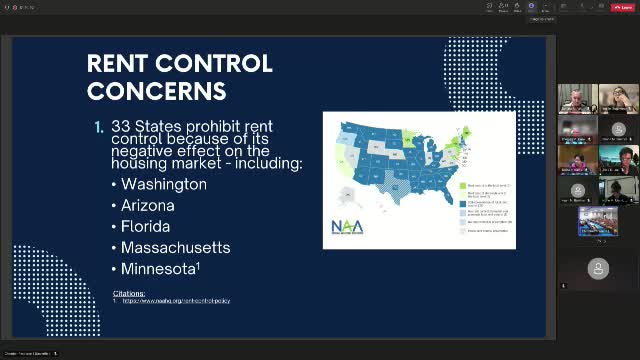Experts warn of development death spiral from new regulations
September 16, 2024 | Maui County, Hawaii
This article was created by AI summarizing key points discussed. AI makes mistakes, so for full details and context, please refer to the video of the full meeting. Please report any errors so we can fix them. Report an error »

In a recent government meeting, concerns were raised regarding the potential negative impacts of new housing regulations on the local rental market and economy. A key speaker highlighted that as rental units are withdrawn from the market, supply diminishes, leading to increased prices—a phenomenon driven purely by supply and demand dynamics.
The speaker emphasized that developers are unlikely to invest in new construction if they perceive limited returns due to regulatory constraints. To stimulate development, they argued, incentives must be provided to encourage builders to create new housing units. Without such measures, the construction of new properties is expected to stagnate.
Additionally, the speaker warned that implementing restrictive rules could have a cascading effect on ancillary jobs related to the rental market, including those in rental management, janitorial services, and landscaping. As the availability of long-term rentals decreases, these supporting industries may face significant job losses, further exacerbating economic challenges.
The potential decline in rental units could also lead to reduced property tax revenues, which would adversely affect essential county services. The speaker described this scenario as a \"death spiral of development,\" particularly concerning for areas with limited land options, such as islands, where alternatives for housing expansion are scarce. The discussion underscored the need for a balanced approach to housing policy that considers both immediate regulatory goals and long-term economic implications.
The speaker emphasized that developers are unlikely to invest in new construction if they perceive limited returns due to regulatory constraints. To stimulate development, they argued, incentives must be provided to encourage builders to create new housing units. Without such measures, the construction of new properties is expected to stagnate.
Additionally, the speaker warned that implementing restrictive rules could have a cascading effect on ancillary jobs related to the rental market, including those in rental management, janitorial services, and landscaping. As the availability of long-term rentals decreases, these supporting industries may face significant job losses, further exacerbating economic challenges.
The potential decline in rental units could also lead to reduced property tax revenues, which would adversely affect essential county services. The speaker described this scenario as a \"death spiral of development,\" particularly concerning for areas with limited land options, such as islands, where alternatives for housing expansion are scarce. The discussion underscored the need for a balanced approach to housing policy that considers both immediate regulatory goals and long-term economic implications.
View full meeting
This article is based on a recent meeting—watch the full video and explore the complete transcript for deeper insights into the discussion.
View full meeting
